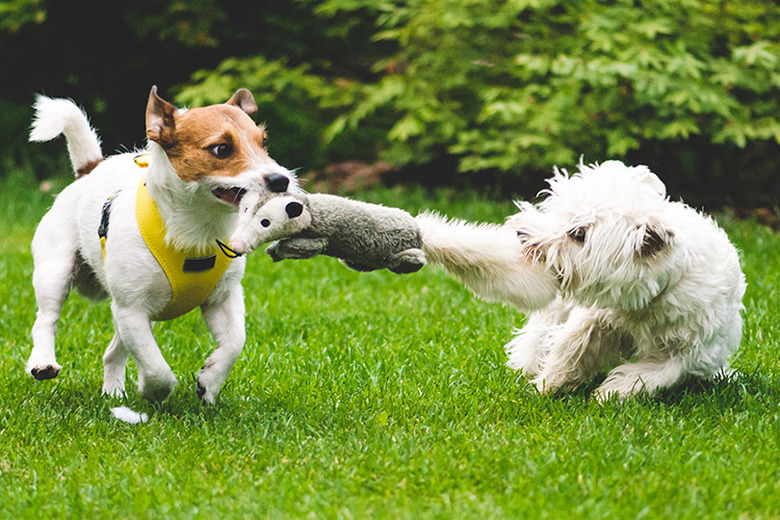Playful Vs. Aggressive Dog Growling
Growling doesn't always mean your dog is angry. While dogs may growl as a way to warn others, they can also growl when involved in rowdy play. Observation goes a long way in determining if your dog is feeling cranky or simply enjoying a rough and tumble game. Here are three tips that'll help you tell the difference between a dog that's playful and one that's peeved.
Tip #1 - Listen carefully. A playful growl is typically higher and softer than an angry growl. A growl that sounds like it comes from deep inside the dog, almost like the dog is vibrating, is an angry growl. Short growls interspersed with silence or high pitched yips are signs your dog is excited.
Tip #2 - Observe body language. In addition to growling, dogs who are feeling aggressive will often stare down the other dog, snarl, expose their teeth, stand extremely tall, with pricked ears and raised tail, walk stiffly and raise their hackles. If your dog is not showing any of these signs, but acting normally other than the growling, he is probably growling playfully.
Tip #3 - Assess the situation. Even if you're sure that your dog is growling playfully, keep an eye out. A playful game of tug-of-war can escalate if one of the dogs gets too rough or excited and turn into a fight. If the growling intensifies or either dog doesn't appear to be playing, put a stop to the activity and let both dogs calm down.
By Stephanie Dube Dwilson
References
PetPlace.com: Why Do Dog's Growl
Sit Means Sit: How To Tell If a Dog Is Being Aggressive
Live Science: 'Grrrr' Means Many Things
About the Author
With features published by media such as Business Week and Fox News, Stephanie Dube Dwilson is an accomplished writer with a law degree and a master's in science and technology journalism. She has written for law firms, public relations and marketing agencies, science and technology websites, and business magazines.
